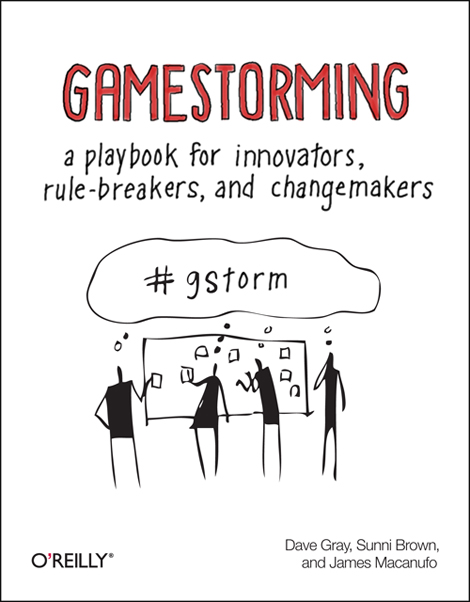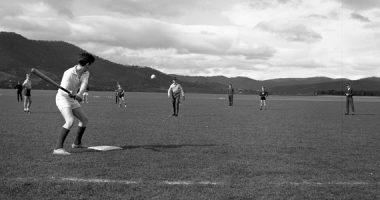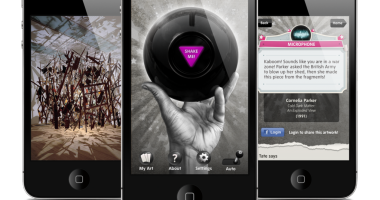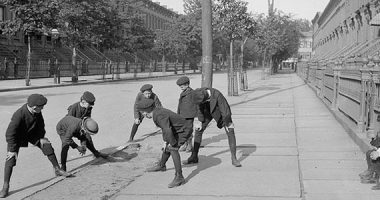Richard Feynman, who won the Nobel Prize for Physics in 1965 (we’re likely to hear more about him over the course of 2013, with the commemoration of the 25th anniversary of his death) was considered an eccentric and extremely curious scientist. Reading his biography this classification is understandable: he had a playful attitude when conducting the “serious activities” typical of a renowned scientist.
Feynman tackled any learning as a challenge that needed to be overcome, incorporating if necessary new knowledge, and thus hybridising science with other disciplines. This broad view of knowledge allowed him to study his discoveries in depth from different spheres.
Linked Concepts
Richard Feynman’s way of working can be closely related with game playing. A game can be defined as an attitude that combines seriously setting oneself a challenge with the freedom of combining the elements one has available, whether they are directly related to the subject or not. This is done with the intention of exploring different answers to be able to choose which is most suitable. Think for a moment about your attitude when practising a sport, or faced with a videogame or a table game: you will probably be making use of all your knowledge and strategies in order, for example, to score more points than your adversary. And perhaps in many cases you will not be worried if you are flirting with the limits of the rules.
This mixture of freedom and exploration has an added consequence; it is a pleasurable activity and, therefore, has a high level of intrinsic motivation that allows many hours to be devoted to finding many answers, trying them out and being able to choose.
And as if it were a game of linked concepts, this definition of a game is not very far removed from that which can be made of any creative process. An attitude that has been shared by creators and teams of developers from different disciplines. It is no surprise, therefore, that techniques based on games are used in organisations in order to explore new fields and opportunities and to develop creativity and implement innovation processes.
Playing Is Not For Everyone
However, although the opposite may seem true, playing is not recommended for any kind of organisation. There are organisations (or people) that move with a “treasure map” which has an X marked on it that needs to be reached, and the organisation’s actions are all oriented towards finding the best path for reaching that X. These are organisations that seek productivity, the rational use of resources or the optimisation of results.
In contrast there are others that strive for unpredictable goals, that have incorporated surprise both into the paths and into the point that they wish to reach. These are organisations that have no maps, but rather compasses that point towards a more or less diffuse goal. Since they are not searching for a particular answer, they can explore paths, make mistakes and learn from their errors, mix concepts from different disciplines and try out each of the answers in order to choose the most suitable ones.
The former usually live in what Daniel Pink calls the “Information Age” where logical and linear skills are required and game playing totally inverts this logic and is counter-productive, as it blurs the arrival point. The latter, following Pink’s explanation in A Whole New Mind, live immersed in the conceptual era and value creativity or a global vision and find sense in reorganizing knowledge, relating it in a network that allows previously unknown connections to emerge. In these organisations, more typical of the cultural sector or the social sciences, game-playing would have to be naturally embedded in their DNA and would have to be established as a habitual way of working in order to generate continued innovation.
What Games Are We Talking About?
One of the first questions formulated by people who want to incorporate game-playing into their work process is how to go about choosing the most suitable games.
- The first ingredient that these games should contain is disconnection from the world of child’s play, whether through aesthetics or the way that the players relate with each other. Thus, in order to mark distances, they have been given an adjective that allows them to achieve greater acceptance as tools for adults and for organisations. These are the so-called serious games, kinds of games that are understood as a simulation of the real world or of processes, designed with the intention of resolving a problem. However this adjective is only an addition, in no case are they a special or different kind of game. My experience is that it is not necessary to eliminate any particular game, but take as a base a very broad range of resources and select that most suited to the objective one wants to pursue. It is only necessary to seek game mechanics suited to the style of the users (much harm has been done by “infantilising” adults with children’s games), a challenge suited to the objective one wants to achieve and to devote a significant amount of time to analysing and extracting conclusions from what has been done.
- The second ingredient is the point which one wants to reach. This objective can not be evident in order to avoid conditioning players to divert all their resources towards seeking a single solution, which would kill the needs of organisations with a compass.
- The third ingredient is related with the communication between players. A game should focus on achieving fluid communication between all the players and allow them to freely relate knowledge in order to construct a valid response.
We used an example of this kind of game to liven up a posters session at a conference a few weeks ago. Participants had to note down five pieces of information that had caught their attention from each poster on a piece of paper, and then choose one, or formulate a new one joining together the different proposals. They wrote this idea on a sticker that they positioned in a visible place and then repeated the process of searching for ideas that caught their attention among the stickers of all the participants. Again they noted the ideas on the sheet and again they summarised them into one idea. To end with, each player stuck this idea that had passed through two filters on a wall within everyone’s view: it was a good summary of all the ideas that were contained in the posters.
As can be seen, the dynamics contained the three ingredients, as the game was suited to the work environment where they were, the participants were not seeking a determined answer but had total freedom to find the most suitable phrase, and communication and the exchanging of ideas were present throughout the entire process. Furthermore, in this way, three ingredients were added to the ideas-generating process: the motivation of a fun task, the freedom to connect ideas and relate them, and the reflection of having reached a series of conclusions by combining the thoughts of many participants.

One of the bibles of this set of games suitable for work in organisations is Gamestorming: a website and a book that cover a collection of games by different creators that have been especially designed to explore and examine business challenges, improve collaboration and generate new focuses. In summary, they are games designed so that they can be incorporated into the creation and innovation processes of organisations.
In any event, a collection of games is simply a starting point. Each game should be a new piece, generated according to the objectives that one wants to achieve and the participants one is addressing. Collections are the source from which it is necessary to drink once one knows what one wants to achieve.
Game Playing, Another Form of Creation
When understood in this exploratory, free and relational way, the game becomes a powerful tool for research and production. However, to be able to incorporate it with normality, it is still necessary to overcome a cultural barrier that has generated a leisure-business binomial where playing games is the antithesis of working.
Different studies have shown that the majority of ideas are born in relaxed atmospheres (heading the lists of places where good ideas are born are on holidays, during walks and in the shower). Therefore it is necessary to place the game side by side with creation and generate a new binomial on the reflections of teacher Brian Sutton-Smith who affirms that the opposite of game playing is depression. This way, we will note the beneficial effects of games on productivity. All that is needed is to find the game best suited to the group we are addressing and the ideal moment to play it.





Oriol Abad Hogeland | 29 March 2013
El treball es una activitat que generalment s’associa a la rutina, la monotonia, la resignacio del deure que s’ha de dur a terme un dia darrera l’altre.
En el cas del treball on hi ha una compensacio economica la part positiva no sempre es limita a treure’n un benefici monetari, tenir present les altres parts positives del rol d’una persona compromesa amb una labor determinada des de una perspectiva menys subjectiva pot esdevenir un exit molt mes gran quan els dies passen aparentment sense cap solta.
Per aixo, recordar que les responsabilitats son el que ens fa ser cumplidors amb el deure sense oblidar la part menys obstinada i seriosa es un fet que costa de reconeixer en la seva totalitat.
Txema | 11 April 2013
El plantejament inicial és una entelèquia; analitza la possibilitat del joc i la rendibilitat de l’individu destinada al treball, des d’una vessant asèptica, on la persona, encara que se li demana una visió holística de la seva realitat laboral, se la contempla abstreta de la seva realitat personal, és a dir, tan sol és possible el desenvolupament d’una actitud de “joc”, fora de les seves passions, emocions, estat d’ànim, problemes existencials, socials, polítics i laborals, econòmics, desconnectat absolutament de la seva impromta pràctica i física, la seva salut, els condicionants vitals, biològics i un llarg etc. que fa interminable i inviable una mínima i natural predisposició al “joc”, a l’enfrontament lúdic davant la realitat obsessiva i urgent, l’assoliment de les necessitats bàsiques i l’angoixa i ansietat per a cumplir els seus objectius vitals i els de les persones pròximes.
Sembla que el joc, apareix en l’espècie una vegada s’ha aconseguit temporalment cobrir les necessitats primàries. Això que avui li diem treball assalariat.
Malgrat la utopia del treball vulgui generar individus productius i feliços com nens inconscients.
Oriol Ripoll | 29 April 2013
Oriol Abad, estic d’acord amb tu amb l’anàlisi del treball com, en principi, una rutina.
Per aquest motiu quan la feina que cal realitzar requereix una dosi de creativitat, es fa necessària alguna cosa més que un reconeixement econòmic. El joc, l’actitud de joc, permet explorar de forma agradable tots els camps relacionats amb la feina que cal fer.
Oriol Ripoll | 29 April 2013
Txema, crec que precisament el platenjament és el contrari del que dius. La persona no està abstreta d’un món sinó que qualsevol de les seves accions té molts vincles amb tot el que li passa.
Precisament per això el joc resulta ideal en un procés creatiu. No hi ha una norma rígida, sinó que es permet la inclusió de tota mena de conceptes, integrant en el procés tot el que s’ha aprés o viscut en diferents àmbits. I això, lluny d’infantilitzar la feina, la fa evolucionar cap a una proposta molt més complexa i rica.
Hegel Emmanuel Pedroza Villalobos | 10 November 2013
El juego es más viejo que el hombre y una magnitud anterior a la cultura. Por nuestra incapacidad de medir su intensidad (donde radica su verdadera esencia), la lógica natural ha sido la de considerarlo como una actividad irracional que cumple su función desinteresada en si misma. Al momento de incorporarle al juego una finalidad que no es la del juego fuera de la “vida corriente”, éste se corrompe.
Las distintas estrategias del “American Way of Life” de implementar el juego como herramienta de trabajo para facilitar el proceso creativo y generar mayor productividad, solo obedecen al nihilismo filosófico propio de nuestra era. En ningún momento se plantea al juego como mecanismo de reestructuración del pensamiento, si no, se le restringe para su adecuación al pensamiento laboral neoliberal del siglo XXI; es decir: se mete al juego en la caja del “think outside the box”.
En definitiva se abusa del juego para abusar del empleador.
Leave a comment